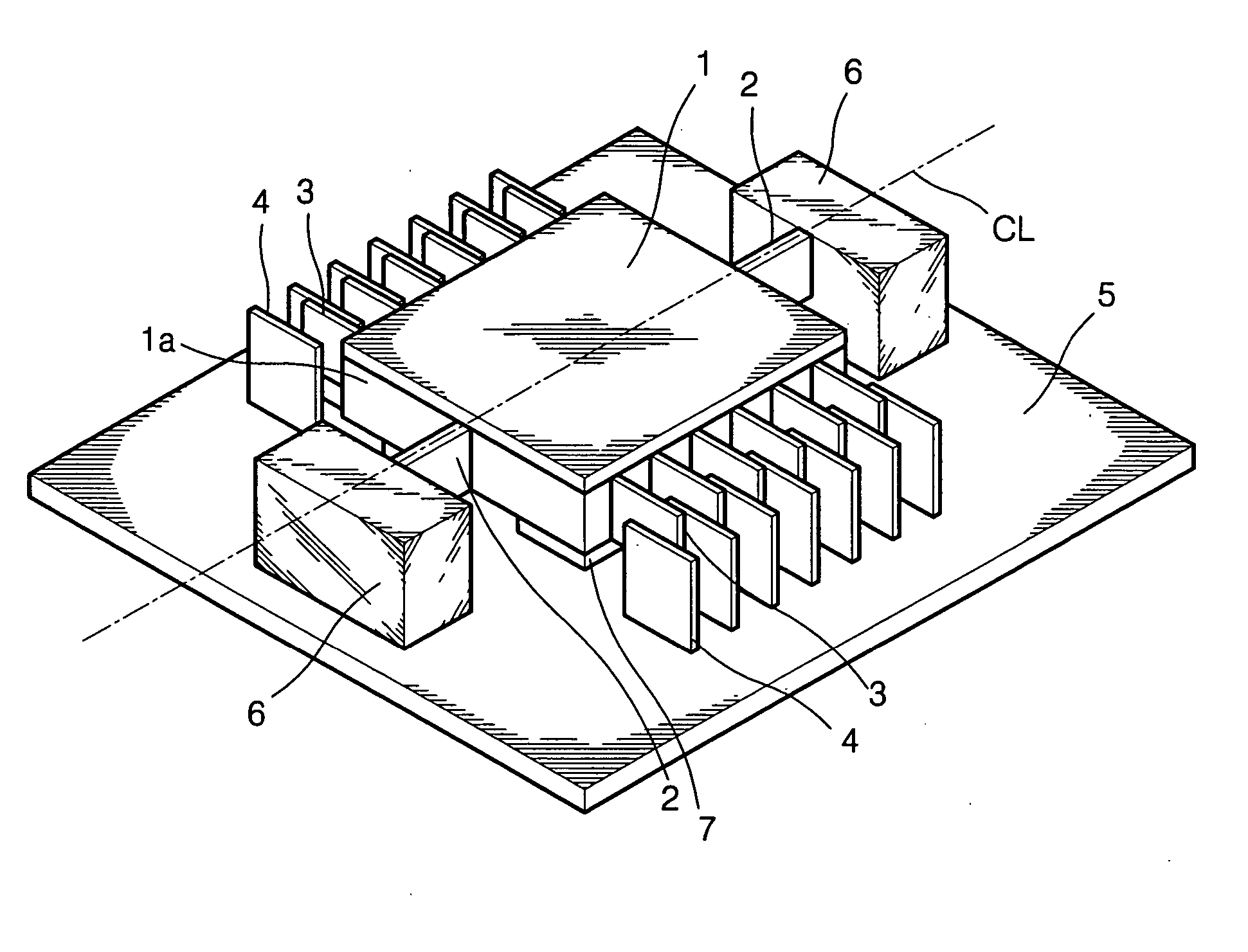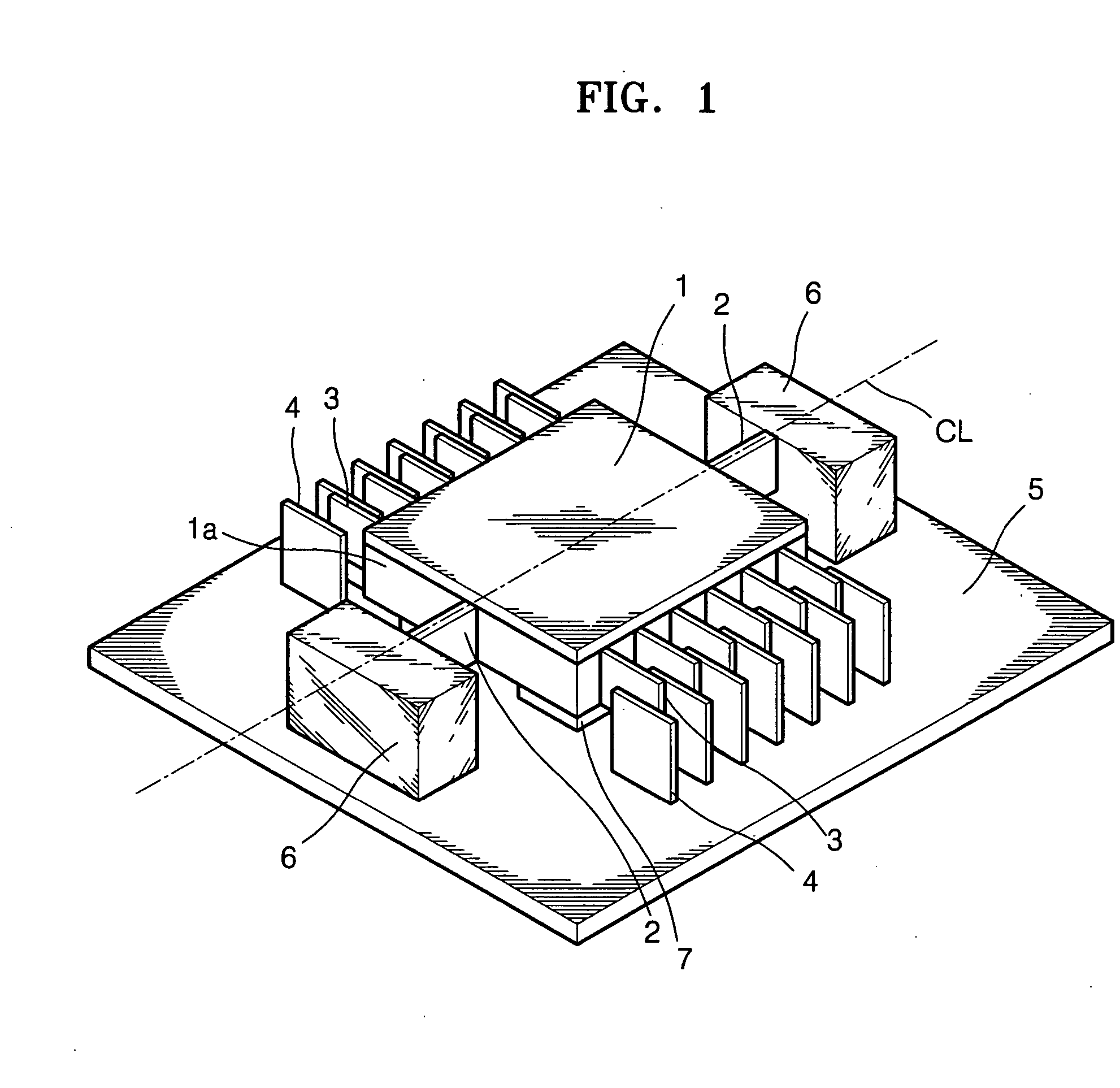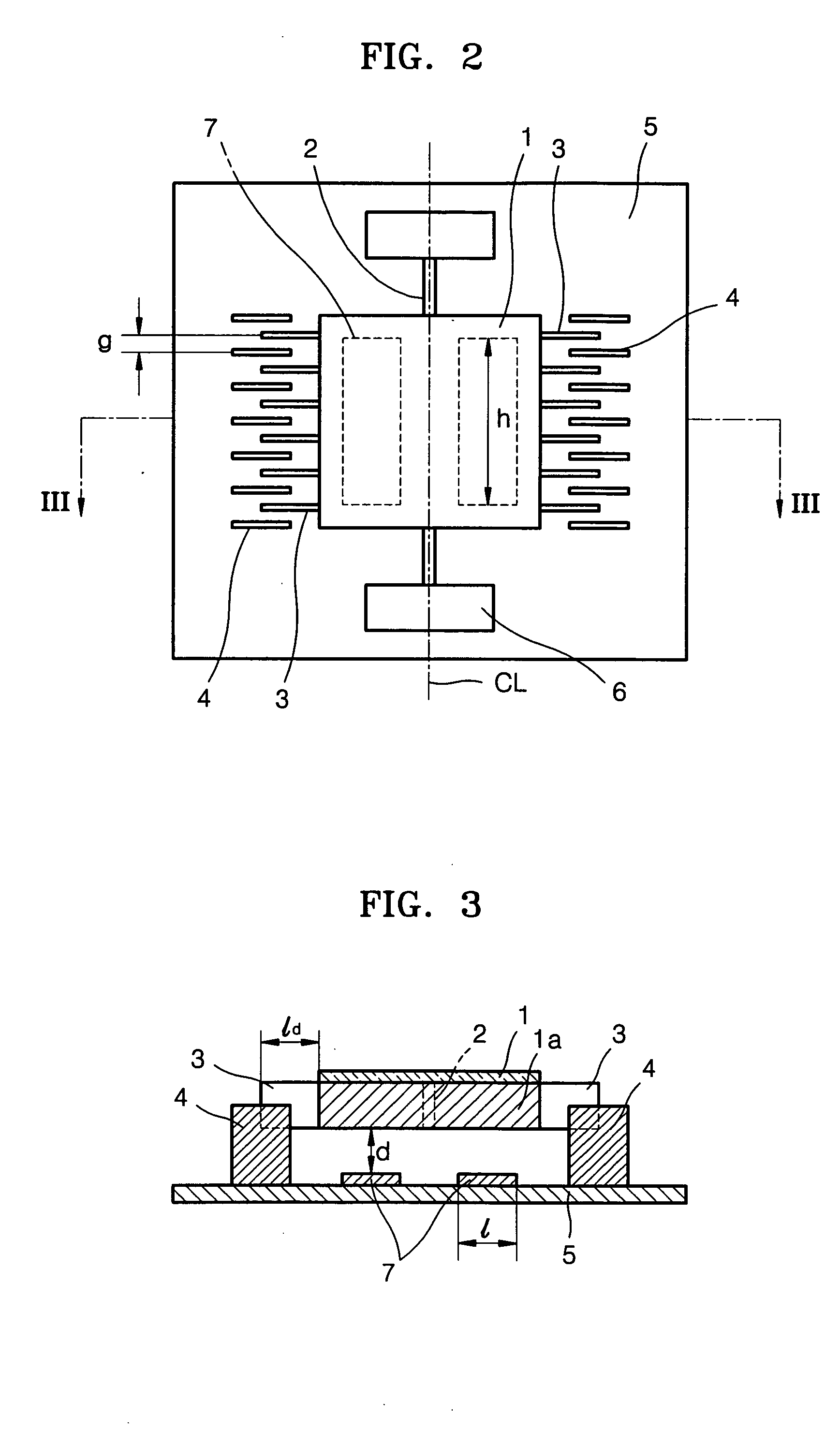Frequency tunable resonant scanner
a frequency tunable resonant and scanner technology, applied in the field of optical scanners, can solve problems such as the difficulty of manufacturing actuators having a predetermined natural frequency
- Summary
- Abstract
- Description
- Claims
- Application Information
AI Technical Summary
Benefits of technology
Problems solved by technology
Method used
Image
Examples
first embodiment
[0034] Referring to FIGS. 1 through 4, in an optical scanner according to the present invention, a stage 1a is suspended by a support portion supporting both side ends of the stage 1a above a substrate 5 made of Pyrex glass. The support portion includes a torsion spring 2 connected to a middle portion of either side edge of the stage 1a and supporting a seesaw motion of the stage 1a, and an anchor 6 supporting the torsion spring 2 to be suspended on the substrate 5.
[0035] A mirror surface 1 which is an optical scanning surface is formed on an upper surface of the stage 1a. A plurality of driving comb electrodes 3 are formed at both sides of the stage 1a to have a predetermined length and parallel to one another.
[0036] A plurality of fixed comb electrodes 4 disposed to alternate with the driving comb electrodes 3 are formed on an upper surface of the substrate 5 to have a predetermined height and parallel to one another. The driving comb electrodes 3 formed on a lower surface of the...
third embodiment
[0062]FIG. 9 is a sectional view of an optical scanner according to the present invention. The same reference numerals are used for the same constituent elements described in the previous embodiments and detailed descriptions thereof will be omitted herein.
[0063] Referring to FIG. 9, the structure of the scanner according to the third embodiment is similar to the scanner according to the first embodiment. However, electrodes 8 and 9 for the frequency tuning of the scanner are vertically formed on the lower portion of the stage 1a and the upper portion of the substrate 5. The driving comb electrode for tuning 9 on the lower portion of the stage 1a and the fixed comb electrode for tuning 8 on the upper portion of the substrate 5 are installed to alternate with one another. When a tuning voltage is applied to the fixed comb electrode for tuning 8 during the driving of the stage 1a, a tuning force is generated between the driving comb electrode 9 and the fixed comb electrode for tuning ...
fifth embodiment
[0068] Referring to FIG. 12, in the scanner the fixed comb electrodes 14 to drive the stage 1a are horizontally fixed to the anchor portion 10 fixed on the substrate 5. The electrodes for tuning the resonant frequency of the scanner are vertically formed on the lower portion of the stage 1a and the upper portion of the substrate 5. The driving comb electrodes 9 for tuning on the lower portion of the stage 1a and the fixed comb electrode for tuning 8 are installed to be alternate with one another. When a tuning voltage is applied to the fixed comb electrodes for tuning 8 during the driving of the stage 1a, a tuning force is generated between the driving comb electrodes 9 for tuning and the fixed comb electrodes for tuning 8. Accordingly, the constant of the torsion spring 2 changes so that the driving frequency decreases. Thus, the resonant frequency of the scanner can be controlled by adjusting the tuning voltage.
PUM
 Login to View More
Login to View More Abstract
Description
Claims
Application Information
 Login to View More
Login to View More - R&D
- Intellectual Property
- Life Sciences
- Materials
- Tech Scout
- Unparalleled Data Quality
- Higher Quality Content
- 60% Fewer Hallucinations
Browse by: Latest US Patents, China's latest patents, Technical Efficacy Thesaurus, Application Domain, Technology Topic, Popular Technical Reports.
© 2025 PatSnap. All rights reserved.Legal|Privacy policy|Modern Slavery Act Transparency Statement|Sitemap|About US| Contact US: help@patsnap.com



